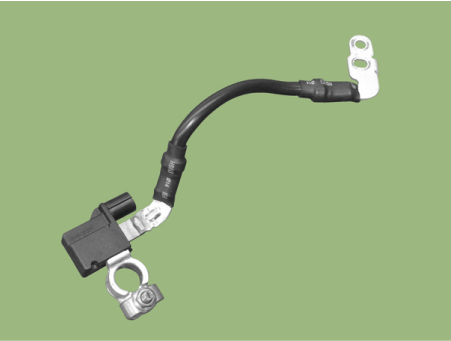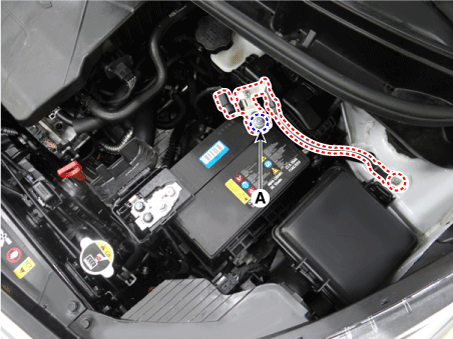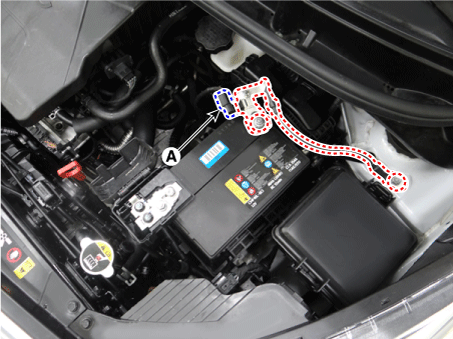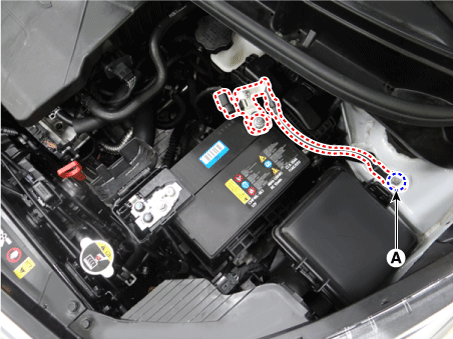Kia Picanto: ISG (Idle Stop & Go) System / Battery sensor
Description and operation
| Description |
Vehicles
have many control units that consume electricity. Each unit controls
its own system based on information from various sensors. Hence, a
stable power supply to these sensors is essential to obtain diverse
information. Battery sensor (A) is mounted on battery (-) terminal. It
transmits battery voltage, current, and temperature data to the ECM,
which then uses these signals to generate voltage by duty cycle.

Repair procedures
| Removal |
| 1. | Turn the ignition switch OFF. |
| 2. | Disconnect the negative (-) battery terminal (A).
|
| 3. | Disconnect the battery sensor connector (A).
|
| 4. | Remove the battery sensor by loosening the mounting bolts (B).
|
| Installation |
| 1. | Install in the reverse order of removal.
|
| Battery Sensor Recalibration Procedure |
After
reconnecting the negative battery cable, the AMS function will not
operate for about 4 hours until the system stabilizes. If the negative
(-) battery terminal has been disconnected from the battery during
repair work for a vehicle equipped with ISG function, battery sensor
recalibration procedure should be performed after the repair work.
| 1. | Turn the Iginition switch ON and OFF. |
| 2. | Park the vehicle for about 4 hours with the hood and all doors closed. |
 ISG (Idle Stop & Go) System
ISG (Idle Stop & Go) System
Components and components location
Components Location
1 . Battery sensor 2 . Brake Booster Vacuum Pressure Sensor (BBVPS) 3 . AGM battery 4 . DC/DC converter 5 . ISG OFF switch 6. Alter ...
 Brake Booster Vacuum Pressure Sensor
Brake Booster Vacuum Pressure Sensor
Description and operation
Description
In
order to ensure adequate brake power assistance in every situation, the
brake booster is equipped with a partial vacuum sensor. The brake
booster v ...
Other information:
Kia Picanto JA 2017-2025 Service & Repair Manual: Manual Transaxle System
Specifications Specifications Transaxle model M5CF1-1 Engine type Gasoline 1.0 T-GDI Manual transalxe oil Capacity 1.6 - 1.7 L (0.42 -0.45 U.S.gal., 1.69 - 1.80 U.S.qt., 1.41- 1.50 lmp qt.) Recommended - SAE 70W, API GL-4 ...
Kia Picanto JA 2017-2025 Service & Repair Manual: Rear Washer Switch
Repair procedures Inspection Multifunction Switch Inspection 1. Check for continuity between the terminals in each switch position as shown below. Rear Wiper & Washer Switch[LHD] [RHD] Inspection (With KDS/GDS) 1. In the body electrical system, failure can be quickly diagnosed b ...
Copyright © www.kpicanto.com 2017-2025





